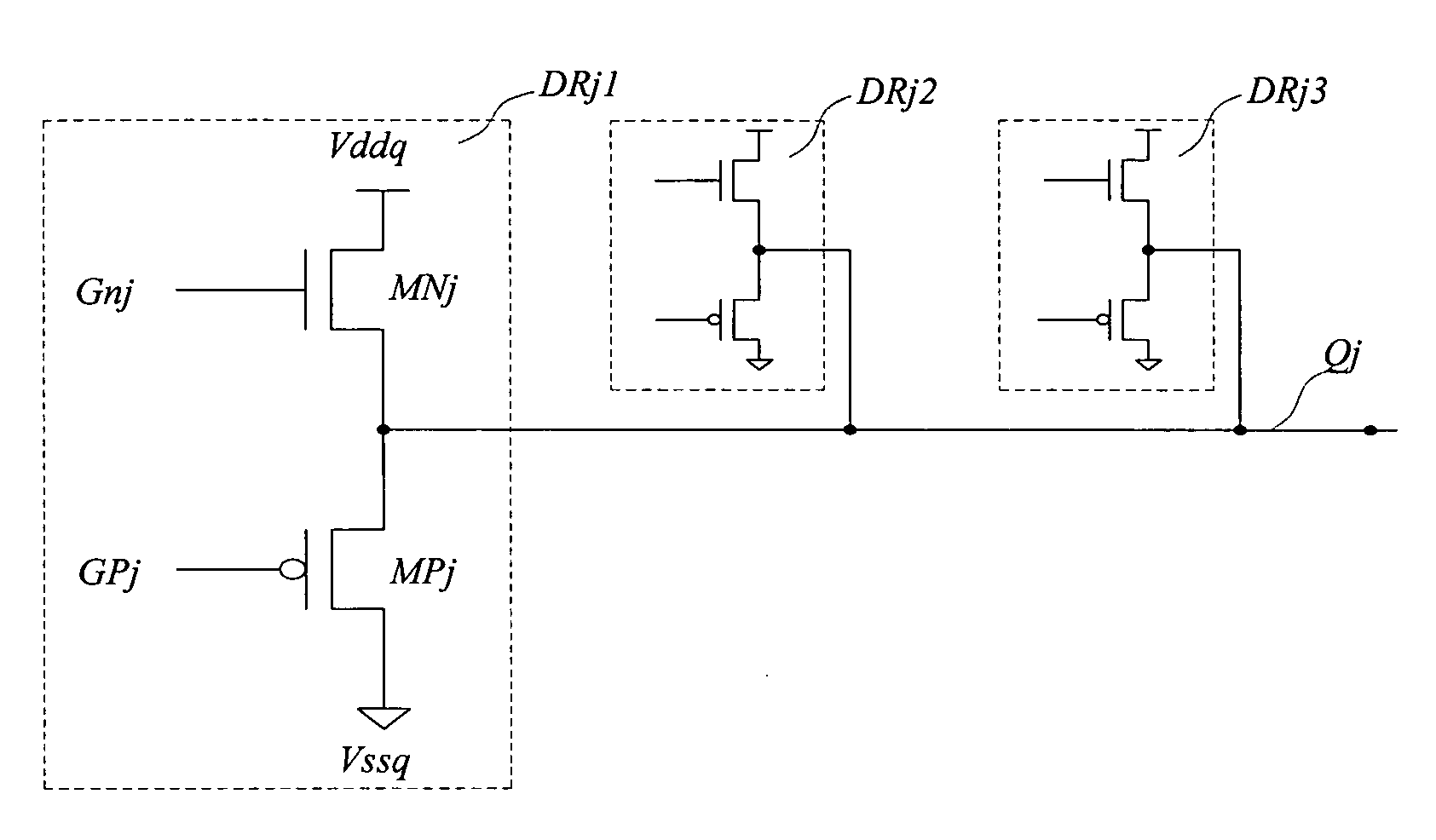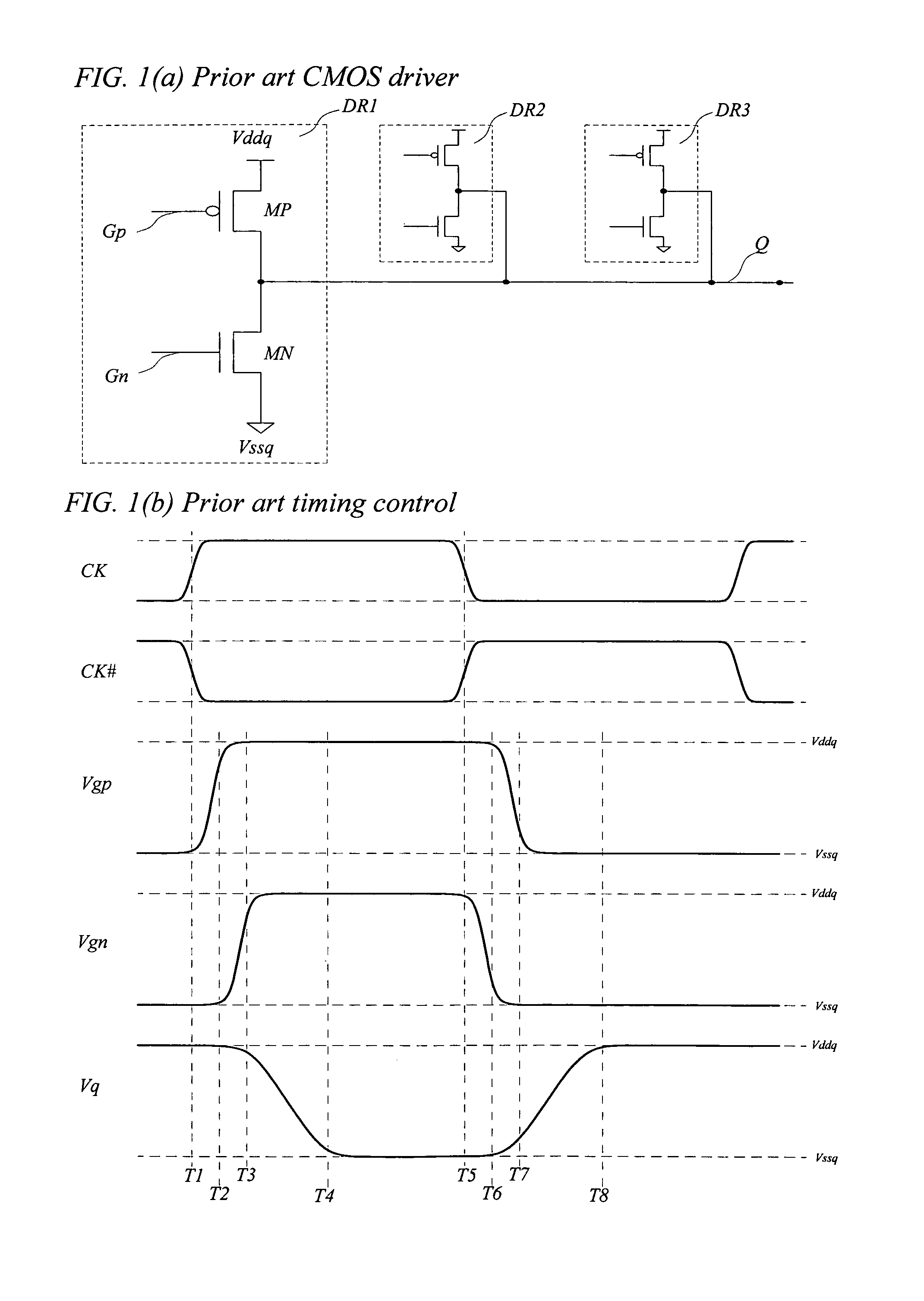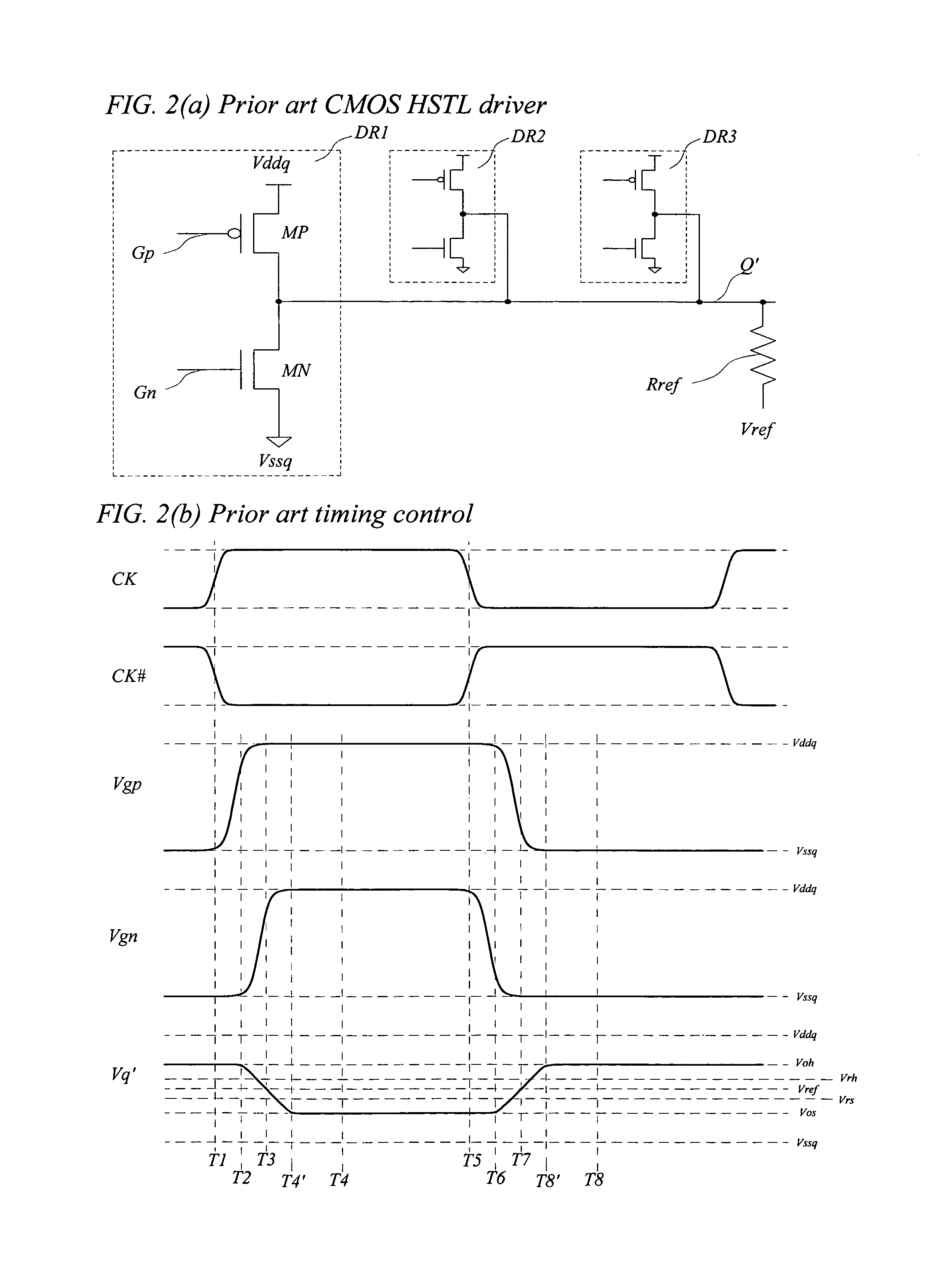High performance low power multiple-level-switching output drivers
a high-performance, output driver technology, applied in logic circuits, pulse techniques, oscillators, etc., can solve the problems of reducing the power consumption of sai drivers, limiting the support of cmos drivers for high-performance interfaces, and i/o bandwidth becoming the performance bottleneck of high-performance systems, etc., to achieve low power consumption, avoid switching noise problems, and high-performance operations.
- Summary
- Abstract
- Description
- Claims
- Application Information
AI Technical Summary
Benefits of technology
Problems solved by technology
Method used
Image
Examples
Embodiment Construction
[0019]The operation principles of prior art output drivers are first discussed to facilitate clear understanding of the present invention.
[0020]FIG. 1(a) is a schematic diagram showing the basic elements of a prior art CMOS output driver (DR1). An output driver is defined as the last-stage circuit used to drive output signals from an IC to external components. A high performance output driver defined in this patent disclosure is the last-stage circuit used to drive high performance switching signals from an IC to external components while it is designed to support output signal switching rate higher than thousands, millions, or even billions of cycles per second. This prior art output driver (DR1) comprises a p-channel pull up transistor (MP) and an n-channel pull down transistor (MN). A pull up transistor is defined as a transistor configured to provide channel current in a direction to pull the output signal only to higher voltage. A pull down transistor is defined as a transistor...
PUM
 Login to View More
Login to View More Abstract
Description
Claims
Application Information
 Login to View More
Login to View More - R&D
- Intellectual Property
- Life Sciences
- Materials
- Tech Scout
- Unparalleled Data Quality
- Higher Quality Content
- 60% Fewer Hallucinations
Browse by: Latest US Patents, China's latest patents, Technical Efficacy Thesaurus, Application Domain, Technology Topic, Popular Technical Reports.
© 2025 PatSnap. All rights reserved.Legal|Privacy policy|Modern Slavery Act Transparency Statement|Sitemap|About US| Contact US: help@patsnap.com



